Here's a Clark & Hall many of you might have seen in Show & tell. It is a different one as it has a round point on it. I appears to have been made that way & if it was altered by anyone, it had to be done long ago. The scales are junk so I carefully took it apart & one side was either broken already or it broke when I took it apart but I was very careful to keep at least one side complete so that I could make a pattern from it so that I can make new scales for it.
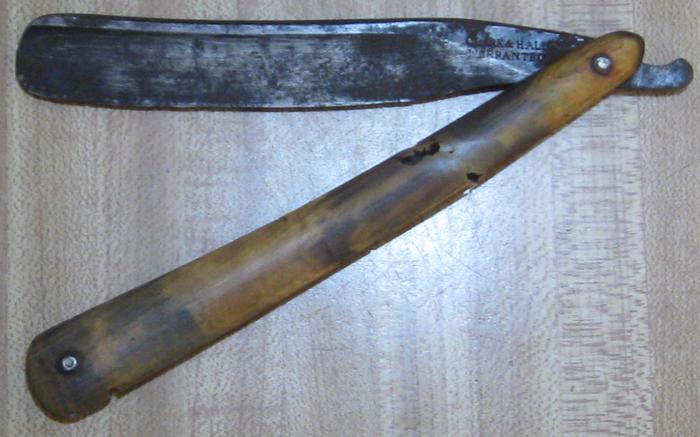
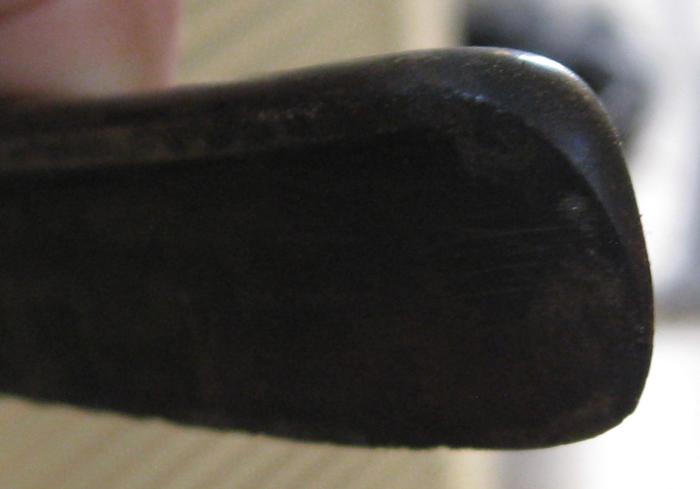
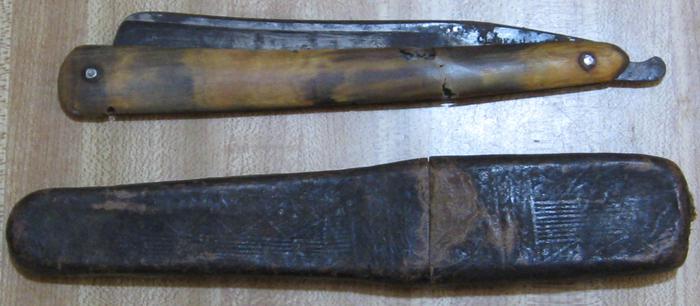
Here it is after I took it apart. This particular straight razor & a few other vintage straights from that era had larger pins in them or like this one, had a small pin but was in a larger sleeve like 2.3 mm with the pin going through it. I noticed this on an old vintage razor I took apart about a year ago. It had the 2.3 mm sleeve or pin. I have had to use this same method in the past when I had some scales that had worn or enlarged pinholes so I would drill them out to 3/32" for that size brass sleeve & use a 1/16" pin to put it together. The blade then actually pivots on the 3/32" brass sleeve rather than the smaller 1/16" pin. The regular size collars will cover the sleeve up but you can also use the larger bullseye collars or the rosette's if ya got 'em. You can see in the pic that when I got the small pin out, the scales stayed together. That was when I suspected that it had the sleeved type. On this one, when I went to drill the sleeve out, the drill bit caught it & just pushed the sleeve out as you see in the pic. I now noticed that the pivot hole in the Clark & Hall blade is larger than 3/32" & is sloppy so I will use a 1/8" carbide drill bit & drill the pivot hole to that size. The 3/32" brass tubing fits perfectly in the 1/8" tubing, so I'll make a brass 3/32" sleeve to fit in the 1/8" brass sleeve. I will then finish it by using a 1/16" pin with larger bullseye collar's on it.
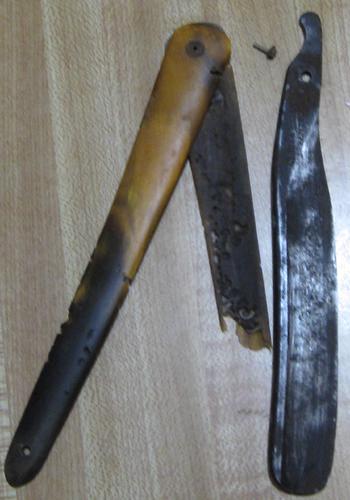
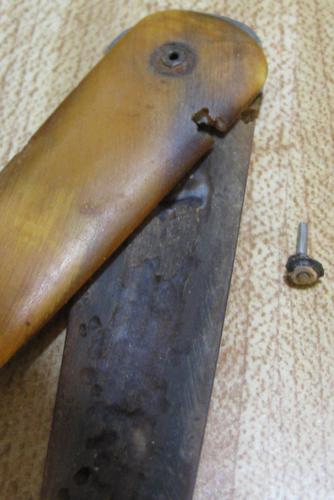
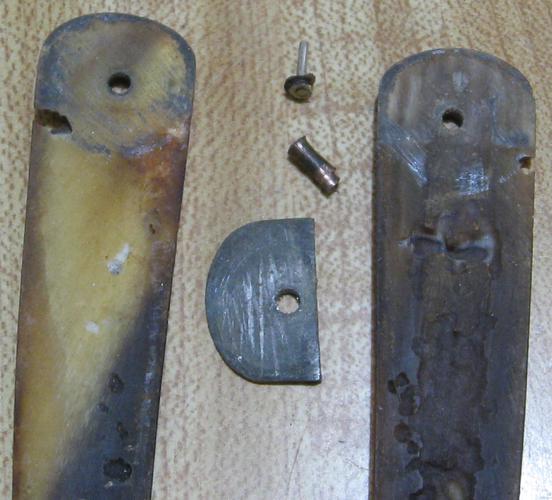
So there ya have it! If you happen to have some scales with an enlarged pinhole in them or you made a mistake drilling out the old pin & went off to the side, you can use a small screw to hold the scales together on one end, keeping them lined up & drill them out to a 3/32" & use a 3/32" brass sleeve with the normal 1/16" pin. You then put that end together using the 3/32" sleeve with a 1/16" screw (temporarliy) & drill the other end out to make it match or you can pin it with a 1/16" pin if just doing a repair & you're going to sell it, but myself, I much rather they all match. You will of course have to drill the pivot hole in the blade to 3/32". If you are working on a Clark & Hall, you will need to drill the pivot hole to 1/8" & make a brass sleeve from some 1/8" brass tubing. You will then have to use a 3/32" brass sleeve inside the 1/8" sleeve & pin it with a 1/16" pin. If you happen to have some collars with a 2.3 mm or 3/32" ID, you can pin it with some 3/32" brass rod which you can get at a hobby store. A welders supply store might even have the 3/32" brazing rod. The De Pew straight razor uses a 2.3 mm pin on those razor's. You can also do this to the blade only if you want it to pivot on a 3/32" sleeve rather for it pivot on the 1/16" pin.






 18Likes
18Likes LinkBack URL
LinkBack URL About LinkBacks
About LinkBacks













 Reply With Quote
Reply With Quote